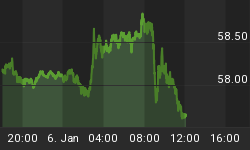Created in 1896 and widely considered as the barometer of America's stock market, the Dow Jones Industrial Average has a long and rich history as the oldest and best-known stock market index. But it’s inherently lacking, and an argument can be made that it’s losing its lustre.
The Dow is one of the most heavily followed indexes not only in the US but across global markets. It consists of 30 of some of the most heavily followed companies in diverse industries including financial services, industrials, healthcare, technology and telecommunications.
Despite its popularity, the Dow Jones is a pretty controversial index that appears flawed in its ability to give investors a good sense of how the stock market is performing.
Here are 3 reasons why:
#1 Too Few Stocks
First off, 30 stocks might have been fairly representatitive of the stock market back in 1928 when the index started listing that many companies (only 12 were listed on the index at inception). But 90 years later, the stock market has exploded to more than 7,300 listings, and a set of 30 companies just doesn’t seem very representative of the market. Related: Central Banks Send A Bullish Signal For Gold
The S&P 500 with its 500-plus companies and 80 percent of the American equity market by capitalization does a much better job as a US stock market rep. The Dow Jones’ market capitilization hovers around 20 percent of the $30-trillion US stock market market cap.
#2 Price-Weighted Index
The S&P 500 is weighted by market capitalization. What this means is that any changes in the stock of a company like Apple with a market cap of $911 billion will affect the index much more than changes by a company like Netflix with a market cap of $173 billion. In fact, a 1 percentage point change in Apple shares equals a 5.3-percent change in Netflix shares.
In sharp contrast, the Dow Jones is a price-weighted index that considers the share prices of the underlying stocks. This means that changes in shares of companies with a large share price influence the movement of the index much more than those with cheaper shares.
For instance, UnitedHealth with a share price of $250.50 influences the movements of the Dow Jones nearly 4x more powerfully than a company like Verizon with a share price of $51.28, despite the two companies having comparable market caps. If that sounds unfair—that’s because it is.

(Click to enlarge)
Source: CNBC
#3 How Stocks are Added To/Booted From the Index
After remaining in the Dow Jones continuously from November 7, 1907, General Electric was finally given the boot this year and replaced with pharmacy benefits manager (PBM), Walgreens Boots Alliance. That was the latest indignity that the worst Dow performer in 2017 suffered all thanks to a serious cash crisis caused by years of inking bad deals.
The thing with the Dow Jones is that it lacks a set criteria or a consistent way of picking which companies are added to the elite club.
Related: Slow Wage Growth, Higher Unemployment In June Jobs Report
Firstly, only the so-called blue chips are granted admission. Secondly, they have to have an excellent reputation, demonstrate sustained growth and be heavily followed. But how do you pick the best candidate to replace a company like GE from a list of literally dozens or even a couple hundred that might qualify? That looks pretty subjective. The only hard and fast rule is that the ratio between the highest share price in the index and the lowest should not exceed 1:10-- everything else is at the mercy of the small committee that does the picking.
Investing in Nasdaq 100
Curiously, the Dow Jones has underperformed most leading indexes including the S&P 500, Nasdaq Composite and Nasdaq 100.
S&P 500 vs Dow Jones YTD Changes

(Click to enlarge)
Source: CNN Money
The often-neglected Nasdaq 100 has been a top performer, returning 11 percent in the year-to-date compared to just 2.4 percent by the S&P 500 and -1.5 percent by the Dow Jones. Nasdaq 100 comprises the famous FANG stocks as well as a good serving of tech’s movers and shakers.
Here’s a list of six ETFs that track the index.
By Alex Kimani for Safehaven.com
More Top Reads From Safehaven.com:

















